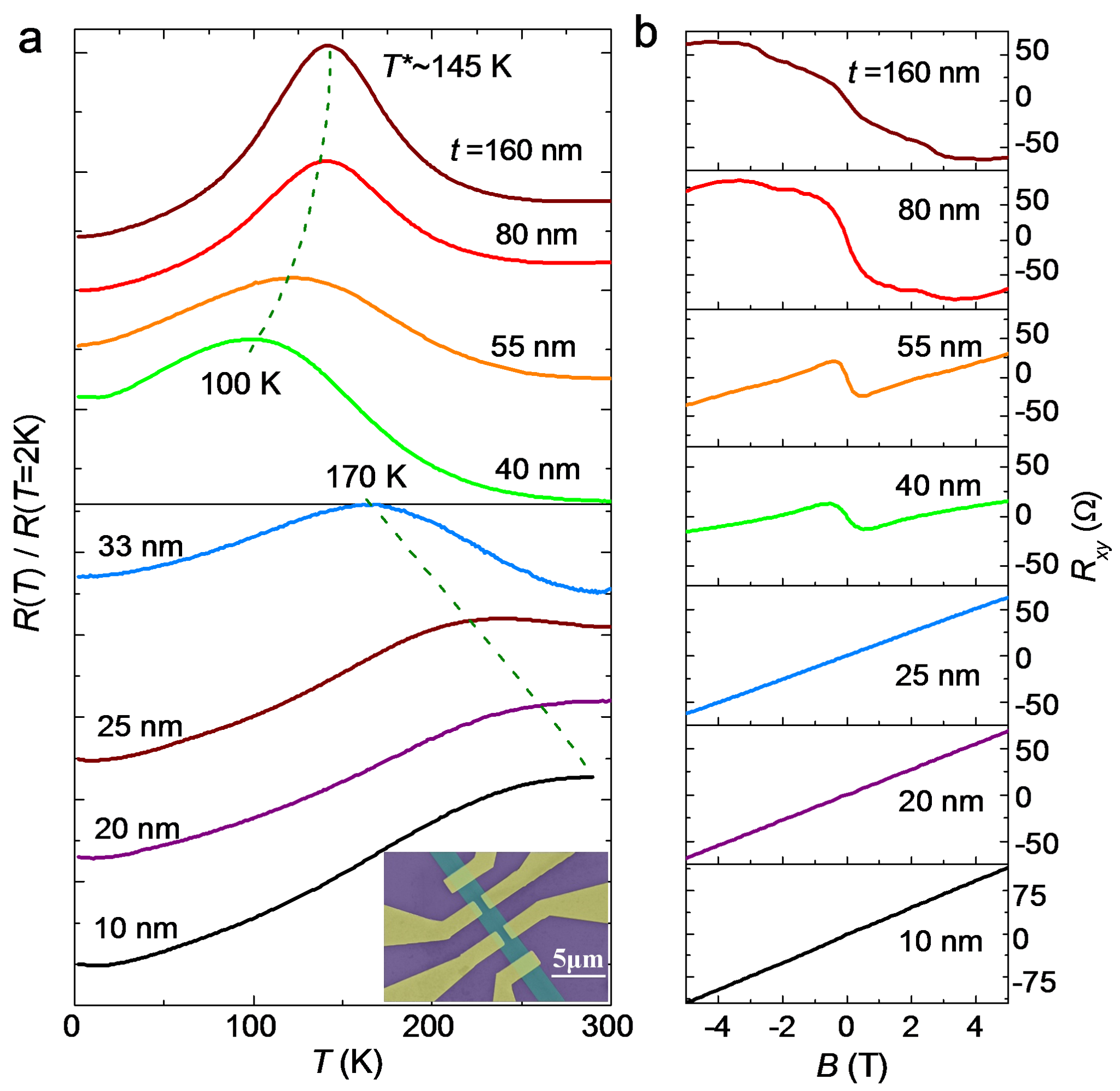
Recently, researchers at High Magnetic Field Laboratory, Chinese Academy of Sciences (CHMFL) discovered thinkckness-tuned transition of band topology in ZrTe5 Nanosheets. Their work was detailed in Phys. Rev. B.
Topological Dirac semimetal is a newly discovered class of materials and has attracted intense attentions. This material can be viewed as a three-dimensional (3D) analogue of graphene and has linear energy dispersion in bulk, leading to a range of exotic transport properties.
Layered material ZrTe5 has been known for decades due to its large thermoelectric power, resistivity anomaly and quantum oscillations.
Contrast results of previous theoretical and experimental work indicate that the thickness, as an alternative way, may effectively tune the electronic structure in ZrTe5, though the mechanism has not been fully explored so far.
Recently, TIAN Mingliang's study team at CHMFL studied the transport properties of ZrTe5 nanosheets with thickness down to 10 nm.

Resistivity of ZrTe5: (a) Normalized temperature dependence of longitudinal resistance ZrTe5 nanosheets with different thickness. All curves are offset vertically for clarity. Inset: a SEM image of a Hall bar device used in the measurement. (b) Hall resistivity of the nanosheets with different thickness measured at T = 2 K. (Image by LU Jianwei)
They find that the resistivity anomaly temperature T* systematically shifts toward lower temperatures as the thickness reduces to 40 nm, indicating the suppression of the electron carriers in the Dirac band.
When the nanosheet thickness is less than 40 nm, a broad resistive peak shows up at higher temperatures which moves up to room temperature with thickness further reduced to 10 nm.
Both longitudinal resistivity and Hall resistivity measurements demonstrate that the resistance peak in thinner nanosheets (< 40 nm) has a different origin from the bulk, where carriers in a secondary hole band dominate the transport.
By tracking the carrier densities, they demonstrate a consecutive downward shifting of the Fermi level from conduction band to valence band as decreasing the thickness down to 10 nm, which reveals a thickness-tuned transition of the band topology in ZrTe5 nanosheets.
These results would be helpful for the understanding of this complex layered material and further study on nanodevices.
This work was supported by the Natural Science Foundation of China, and the National Key Research and Development Program of China, the program of Users with Excellence, the Hefei Science Center of CAS, the CAS/SAFEA international partnership program for creative research teams of China.

86-10-68597521 (day)
86-10-68597289 (night)

52 Sanlihe Rd., Xicheng District,
Beijing, China (100864)

